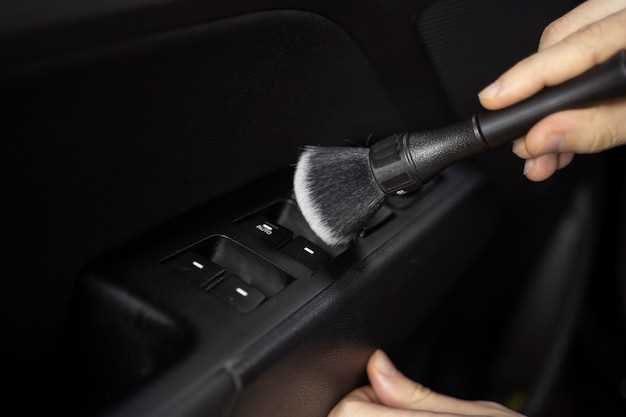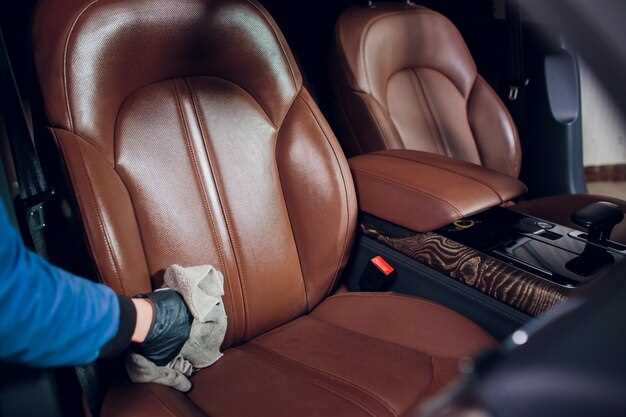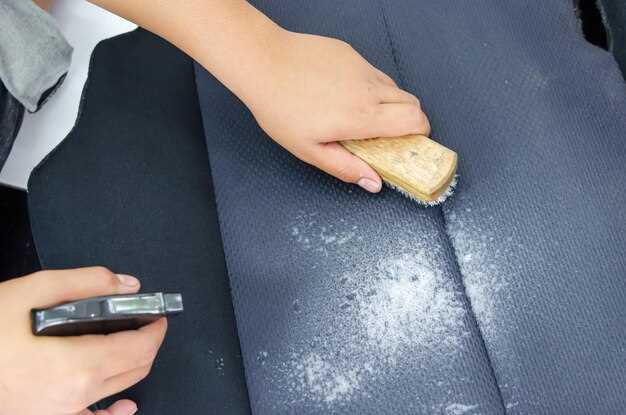
Maintaining the pristine condition of your car’s upholstery can be a challenging task, especially when it comes to tackling stubborn stains. Over time, spills and dirt can accumulate, making your vehicle’s interior look unkempt and less appealing. Knowing the right techniques for removal is essential for any car owner who values cleanliness and care for their vehicle.
In this guide, we will explore practical methods to effectively remove stubborn stains from various types of upholstery, ensuring that your car remains a comfortable and inviting space. Understanding the specific needs of your car’s upholstery is crucial, as different materials require different approaches for effective stain removal.
By following the suggestions and techniques outlined here, you can restore the appearance of your car’s interior, prolonging the life of your upholstery and enhancing your driving experience. The right care not only improves aesthetics but also contributes to the overall value of your vehicle.
Identify Common Stains and Their Sources

Cars are often subjected to a variety of stains that can compromise the appearance of upholstery. Understanding the common types of stains and their sources is essential for effective stain removal. Here are some prevalent stains you might encounter:
1. Food and Beverage Stains: Spills from snacks and drinks are frequent culprits. Soft drinks, coffee, and juice can easily leave behind sticky residues and discolorations. It’s important to address these stains promptly to prevent them from setting.
2. Oil and Grease Stains: These stains often originate from fast food items, mechanical work, or even body oils. Oil-based stains can be particularly stubborn and may require specific cleaning agents for effective removal.
3. Ink Stains: Ink from pens, markers, or other writing instruments can pose a significant challenge. These stains identify themselves through their deep pigmentation, making them easily noticeable against lighter upholstery shades.
4. Mud and Dirt Stains: Tracked-in mud and dirt are common, especially in vehicles used for outdoor activities. These stains typically build up from shoes or other items and can require more intensive cleaning efforts.
5. Blood Stains: Blood can leave behind dark stains on upholstery. These stains require careful treatment, as improper methods can lead to further discoloration or setting of the stain.
6. Dye Stains: Color transfer from items like jeans or other dyed fabrics can leave unsightly marks on upholstery. These are often difficult to remove and may need specialized products designed for dye removal.
Recognizing these common stains and their sources enables car owners to act swiftly and effectively to maintain their vehicle’s upholstery. The sooner a stain is addressed, the easier it is to achieve successful removal.
Select the Right Cleaning Products for Upholstery
Choosing the appropriate cleaning products is crucial for effective stain removal from car upholstery. The right cleaners not only help in eliminating stubborn stains but also protect the fabric from damage. When selecting a cleaning solution, consider the type of upholstery material you are dealing with. Different fabrics may require specific products to ensure safety and efficiency.
For fabric upholstery, look for cleaners that are specifically designed for water-based stains. Products containing enzymes can effectively break down organic matter, making stain removal easier. Always check the label to ensure that the cleaner is suitable for use on your specific upholstery type.
For leather upholstery, opt for pH-balanced cleaners that won’t strip the natural oils. Avoid harsh chemicals that can cause the leather to dry out and crack over time. Cleaning conditioners can help maintain the leather’s suppleness while assisting with stain removal.
Before applying any product, it is essential to perform a spot test in an inconspicuous area. This helps to prevent any unwanted discoloration or damage. After confirming that the product is safe to use, follow the manufacturer’s instructions for optimal results.
Finally, always keep a few essential cleaning items on hand, such as microfiber cloths and brushes, to aid in the stain removal process. Proper selection and application of cleaning products will enhance the longevity of your car’s upholstery and keep it looking pristine.
Step-by-Step Guide to Deep Cleaning Upholstery Stains

Deep cleaning upholstery requires careful attention to detail and the correct approach for effective stain removal. Begin by gathering your supplies, which should include a vacuum cleaner, upholstery cleaner, soft brushes or cloths, and a spray bottle for solution application.
First, vacuum the upholstery thoroughly to remove loose dirt and debris. Pay attention to crevices where dirt can accumulate. This step ensures that stains are more accessible during the cleaning process and prevents further embedding of the stains into the fabric.
Next, identify the type of stain that needs removal. Different stains, such as food, grease, or ink, may require specific cleaning solutions for effective treatment. Refer to the upholstery care label for recommended cleaning methods and solutions that are safe for your fabric.
Prepare your cleaning solution by either using a commercial upholstery cleaner or mixing a homemade solution using mild detergent and water in a spray bottle. Test the solution on a hidden area of the upholstery to ensure it does not cause discoloration or damage.
Once the solution is tested, spray a small amount directly onto the stained area. Allow it to sit for a few minutes to break down the stain. Be cautious not to saturate the fabric, as excessive moisture can lead to mold or mildew growth.
Using a soft brush or cloth, gently work the solution into the stain using a circular motion. Avoid scrubbing aggressively, as this may damage the fibers of the upholstery. Rinse the brush or cloth frequently to avoid spreading the stain.
After treating the stain, blot the area with a clean, dry cloth to absorb excess moisture. This step is essential to remove any remaining solution and to prevent the upholstery from becoming overly wet.
Finally, allow the area to air dry completely. Ensure the car’s windows are open or park in a well-ventilated area to expedite the drying process. Once dry, vacuum the area again to restore the fabric’s texture and remove any remaining cleaning residues.




